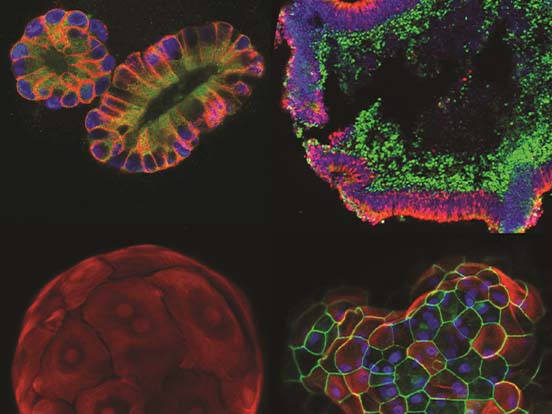A customer spotlight on how our CELLBANKER® 1 solution helped researchers at the Clevers lab (pioneers of organoid culture at the Hubrecht Institute, Netherlands) when they needed to freeze down their organoids at short notice in the lockdown.

Heparan Sulfate in COVID-19 Infection, Disease – and Therapeutics
November 13, 2020
Single-Cell Sorting of Oligodendrocytes and Oligodendrocyte Precursor Cells
August 27, 2020Lockdowns to control the spread of COVID-19 have forced many scientists to freeze down their experiments, to keep them safe while they are kept away from the lab. AMSBIO’s CELLBANKER® and STEM-CELLBANKER® freezing solutions provide a simple and economical solution in such emergencies, as well as for routine archiving – they can even be used to cryopreserve cultured cells, organoids or other 3D structures in situ in the original culture plate.
Ease of Freezing with CELLBANKER®
Indeed, before I was always using the FBS/DMSO based freezing method which not only costs a lot of time but also requires transfer by slow cooling to -80°C to liquid nitrogen. On the day of the lockdown, me and some other researchers froze our organoids down for the first time in CELLBANKER. The procedure was a lot easier and faster since I could simply transfer the organoids in CELLBANKER to the freezer immediately. This also solved the limited availability of Mr Frosty’s which was a problem because we all had to freeze down lines.After the lockdown, the organoids looked similar after thawing to standard freezing methods and could be easily retrieved from personal drawers instead of shared Mr Frosty drawers.
I approve if this is used as quote since it genuinely helped the freezing when going into lockdown.
Jelte van der Vaart, PhD student, Clevers Lab, Hubrecht Institute, Netherlands

CELLBANKER® 1, CELLBANKER® 2 and STEM-CELLBANKER® have also been validated for the cryopreservation and recovery of organoids by Robert Arnés in the Huch Lab (now at the MPl-MCG, Germany) – see detailed protocol and results. CELLBANKER® 2 has been cited as below by the Vallier and Knoblich labs.
Organoids grew well when recovered
See below for images of Human Airway and Murine Thyroid Organoids frozen in CELLBANKER 1® during the lockdown, and imaged post-thaw.

The presence of KRT5+ cells shows that the lung airway organoids are still consistent of stem cells which can be propagated into more organoids, in short the culture is still able to expand. This is an important message as well for the thawing that basal cells survive the freezing.
Jelte van der Vaart, PhD student, Clevers Lab, Hubrecht Institute, Netherlands

PAX8 is a marker of thyroid gland organogenesis. These organoids also expressed NKX2.1 (also named TTF1: thyroid transcription factor 1) staining – the combination NKX2.1/PAX8 is thyroid unique.
Product Information
| Product Code | Product Name | Pack Size | Datasheet |
|---|---|---|---|
| 11889 | CELLBANKER 1 | 20 ml | View |
| 11884 | 4 x 20 ml | View | |
| 11888 | 100 ml | View | |
| 11892 | CELLBANKER 2 | 20 ml | View |
| 11893 | 4 x 20 ml | View | |
| 11891 | 100 ml | View | |
| 11897 | STEM-CELLBANKER GMP Grade | 20 ml | View |
| 11894 | 4 x 20 ml | View | |
| 11890 | 100 ml | View | |
| 11897F | STEM-CELLBANKER GMP Grade - DMSO Free | 20 ml | View |
| 11894F | 4 x 20 ml | View | |
| 11890F | 100 ml | View | |
| 11900 | HSC-BANKER - GMP Grade | 15 ml | View |
Relevant Publications
Vallier Lab (Cambridge, UK) – Cryopreservation of cholangiocyte organoids
Tysoe et al. (2019) Nature Protocols, 14(6), 1884
Knoblich Lab (Vienna, Austria) – Archiving clones with desired genetic characteristics
Bagley et al. (2017) Nature Methods, 14, 743.
Related Products
Additional Resources
We couldn't find any records.
Subscribe to our newsletter
Be the first to hear about upcoming events, product news, special offers, application notes, and more

